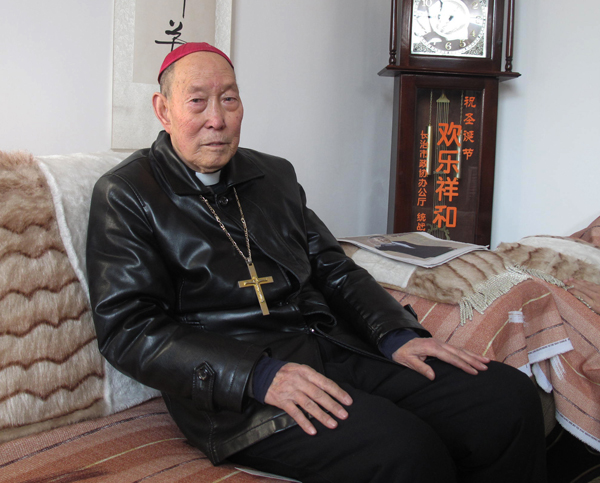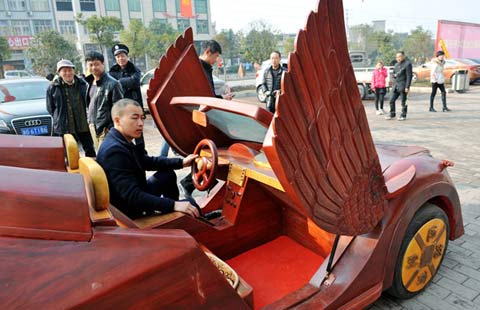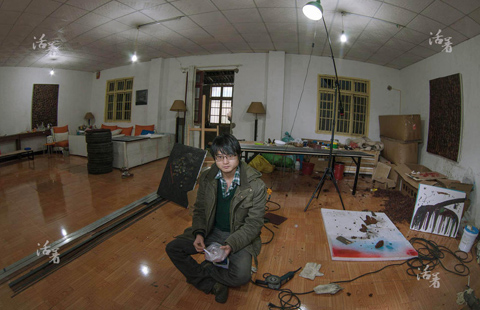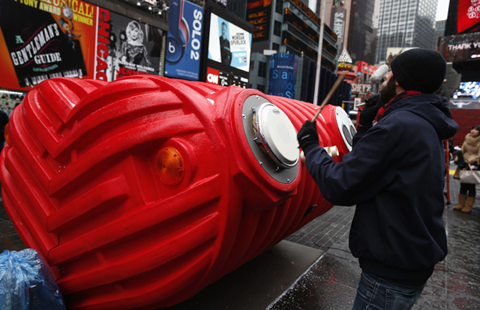Building on the right foundations
Updated: 2015-02-10 07:54
By Xu Wei/Sun Ruisheng(China Daily)
|
||||||||
 |
|
The main cathedral of the Catholic diocese of Changzhi, Shanxi province. ZHAO MENGJIAO/CHINA DAILY |
In April, the demolition of the massive Sanjiang church in Wen-zhou, Zhejiang province, prompted international headlines, even though the authorities said the move was aimed at rectifying illegal construction and paving the way for further economic development.
Although Sanjiang is the best-known case, property disagreements between church groups, both Catholic and Protestant, and local authorities have made headlines in a number of provinces.
The Catholic church in Quanzhou, Fujian province, has been in a stand-off with commercial and industrial interests over the fate of a valuable piece of real estate since 2013, according to local media reports.
In Changzhi, the city's Protestants, estimated to number about 10,000, were able to build a new church last year with the help of 9 million yuan donated by the Changzhi City Bureau of Religious Affairs. Li Baohong, a protestant elder, said the new house of worship is the result of decades of effort from worshippers and the clergy after the original church building was commandeered by the local authorities, and.
"The People's Hospital is now located in the building our church occupied. Once the property had been confiscated, it was impossible to get it back. All we could do was push the local authorities to find another place in the city where we could build a church," he said.
Ding said the diocese once owned six properties in Beijing, but they were commandeered during the "cultural revolution", and "so far, we have only been able to get one of them back". It will be impossible to reclaim some of the buildings because they are now occupied by government departments, he said.
Professor Cao-the author of Constructing China's Jerusalem: Christians, Power and Place in Contemporary Wenzhou, an examination of the role of Christianity in modern China-said that during the 1950s and '60s, a large number of churches were razed to make room for government buildings, a policy that has resulted in the problems now faced by Christian denominations nationwide. The issue is much more complex in first-tier cities, including Beijing and Shanghai, where the urbanization process began early and real estate prices are much higher than the national average.
"However, the issue of ownership of church property mainly affects the community services offered by religious groups, who are unlikely to attract new members or offer regular services without a brick and mortar center of activity," he said. "My observation is that the expansion of religion goes hand in hand with a rise in the number of churches."
A lack of regulations or laws to define the types of property religious groups can own is also exacerbating the situation. "The church property issue is important in that a fixed church building would make it easier for church leaders to manage religious activity," Cao said, adding that it would also make it easier for congregations to supervise the use of donations.
The big sticking point, though, is that a fixed location would also make it easier for local authorities to supervise religious activity, something local governments are happy to facilitate, Cao said. "My experience is that the local religious authorities are willing to help with the return of religious property. Officially recognized religious venues are not only their field of responsibility, but they are also a power base."
Zhao Mengjiao contributed to this story.

 Farmer builds sports car out of wood
Farmer builds sports car out of wood
 Bleak outlook for art students six months after graduation
Bleak outlook for art students six months after graduation
 US launches drive to save monarch butterfly
US launches drive to save monarch butterfly
 Police hone skills before heading for mission
Police hone skills before heading for mission
 Listen to your heartbeat at Times Square
Listen to your heartbeat at Times Square
 Sam Smith triumphs with four Grammy wins
Sam Smith triumphs with four Grammy wins
 Top 10 ways to spend your year-end bonuses
Top 10 ways to spend your year-end bonuses
 Paintings by DPRK's Mansudae Art Studio debut in Shenyang
Paintings by DPRK's Mansudae Art Studio debut in Shenyang
Most Viewed
Editor's Picks

|

|

|

|

|

|
Today's Top News
High royalties key reason behind Qualcomm fine: NDRC
Net regulator to meet US ambassador on WeChat
The peeping eyes of the United States
January inflation cools to 0.8%
Qualcomm to pay $975m fine for antitrust violation
Dalai Lama meeting 'unnecessary provocation'
Chinese Navy officers end US tour
Times Square: a Lunar hotspot?
US Weekly

|

|








